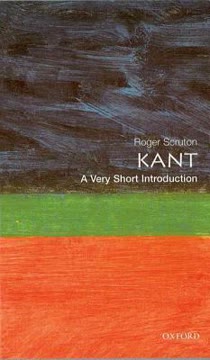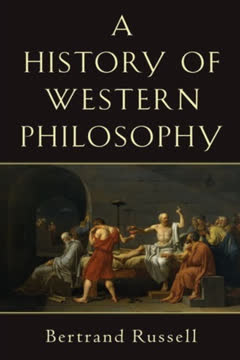نکات کلیدی
1. معماری سازمانی فرآیندهای کسبوکار را با سیستمهای فناوری اطلاعات همسو میکند
معماری سازمانی معمولاً به عنوان یک چارچوب گسترده در سطح سازمان یا نهاد برای نمایش و ادغام فرآیندهای کسبوکار، جریانهای اطلاعاتی، سیستمها، برنامهها، دادهها و زیرساختها به منظور پشتیبانی مؤثر و کارآمد از نیازهای سازمان استفاده میشود.
رویکرد جامع. معماری سازمانی دیدگاهی جامع از چگونگی پشتیبانی سیستمهای فناوری اطلاعات یک سازمان از اهداف و فرآیندهای کسبوکار آن ارائه میدهد. این شامل توسعه نرمافزار، زیرساخت، مدیریت داده و جریانهای کاری کسبوکار میشود. با ایجاد یک چارچوب یکپارچه، معماری سازمانی به سازمانها امکان میدهد تصمیمات استراتژیک فناوری را که با اهداف کلی آنها همسو است، اتخاذ کنند.
مزایای کلیدی:
- بهبود همسویی کسبوکار و فناوری اطلاعات
- افزایش کارایی عملیاتی
- تخصیص بهتر منابع
- افزایش چابکی و سازگاری
- کاهش پیچیدگی و تکرار
2. ماژولاریت و اتصال سست پایههای توسعه سازمانی هستند
کلاسهای با اتصال سست باید به "وسایل هدف" جداگانه تقسیم شوند. در دنیای سازمانی، اینها به عنوان واحدهای کد شناخته میشوند.
انعطافپذیری و نگهداریپذیری. ماژولاریت و اتصال سست اصول اساسی در توسعه سازمانی هستند. با تقسیم سیستمهای پیچیده به واحدهای کد کوچکتر و مستقل، توسعهدهندگان میتوانند برنامههای انعطافپذیرتر و نگهداریپذیرتری ایجاد کنند. این رویکرد امکان آزمایش، بهروزرسانی و مقیاسپذیری آسانتر اجزای فردی را بدون تأثیر بر کل سیستم فراهم میکند.
مزایای کلیدی:
- بهبود قابلیت استفاده مجدد از کد
- عیبیابی و رفع اشکال آسانتر
- همکاری سادهتر بین تیمهای توسعه
- افزایش مقیاسپذیری سیستم
- کاهش خطر شکستهای سیستمگسترده
3. توسعه مبتنی بر آزمون اطمینان از قابلیت اطمینان و هدایت طراحی را فراهم میکند
توسعه مبتنی بر آزمون شما را مجبور میکند در چرخههای بسیار کوتاه کار کنید و فقط بر روی نیازهای خاص برنامه خود تمرکز کنید. شما آزمونهای کوتاه مینویسید و حداقل کد لازم برای عبور از آنها را پیادهسازی میکنید، سپس بازسازی و تکرار میکنید.
رویکرد کیفیتمحور. توسعه مبتنی بر آزمون (TDD) یک روششناسی است که بر نوشتن آزمونها قبل از پیادهسازی عملکرد تأکید دارد. این رویکرد نه تنها اطمینان از قابلیت اطمینان کد را فراهم میکند، بلکه طراحی نرمافزار بهتری را نیز هدایت میکند. با تمرکز بر واحدهای کد کوچک و قابل آزمون، توسعهدهندگان به طور طبیعی سیستمهای ماژولارتر و با اتصال سستتر ایجاد میکنند.
چرخه TDD:
- نوشتن یک آزمون ناموفق
- پیادهسازی حداقل کد برای عبور از آزمون
- بازسازی کد
- تکرار
مزایای TDD:
- بهبود کیفیت و قابلیت اطمینان کد
- تشخیص و رفع سریعتر اشکالات
- مستندسازی بهتر کد از طریق آزمونها
- تشویق به طراحیهای سادهتر و متمرکزتر
4. تزریق وابستگی کد انعطافپذیر و نگهداریپذیر را ممکن میسازد
الگوی تزریق وابستگی (DI) به عمل تأمین یک وابستگی خارجی به یک ماژول سطح بالا اشاره دارد. این نوعی از وارونگی کنترل است که در آن فرآیند بهدستآوردن یک ماژول سطح پایین معکوس میشود.
جدا کردن وابستگیها. تزریق وابستگی یک الگوی طراحی است که با خارجیسازی ایجاد و مدیریت وابستگیهای شیء، اتصال سست را ترویج میکند. به جای کدنویسی سخت وابستگیها در یک کلاس، آنها از بیرون "تزریق" میشوند، معمولاً از طریق سازندهها، روشها یا ویژگیها. این رویکرد کد را انعطافپذیرتر، قابل آزمونتر و نگهداریپذیرتر میکند.
انواع تزریق وابستگی:
- تزریق سازنده
- تزریق تنظیمکننده
- تزریق روش
مزایا:
- بهبود قابلیت آزمون از طریق شبیهسازی آسانتر وابستگیها
- افزایش قابلیت استفاده مجدد و ماژولاریت کد
- سادهسازی مدیریت پیکربندی
- کاهش کد تکراری
5. کانتینرهای وارونگی کنترل ایجاد و مدیریت شیء را ساده میکنند
کانتینرهای IoC به حفظ ماژولاریت کد کمک میکنند در حالی که بسیاری از منطقهایی را که توسعهدهندگان در غیر این صورت باید خودشان بنویسند، خودکار میکنند.
خودکارسازی وابستگیها. کانتینرهای وارونگی کنترل (IoC) چارچوبهایی هستند که ایجاد و طول عمر اشیاء در یک برنامه را مدیریت میکنند. آنها فرآیند تزریق وابستگی را خودکار میکنند و مقدار کد تکراری که توسعهدهندگان باید بنویسند را کاهش میدهند. کانتینرهای IoC پیچیدگیهای ایجاد شیء را مدیریت میکنند و به توسعهدهندگان اجازه میدهند بر منطق کسبوکار به جای نگرانیهای زیرساختی تمرکز کنند.
ویژگیهای کلیدی کانتینرهای IoC:
- حل خودکار وابستگی
- مدیریت چرخه حیات اشیاء
- ایجاد شیء مبتنی بر پیکربندی
- پشتیبانی از انواع مختلف تزریق (سازنده، ویژگی، روش)
کانتینرهای IoC محبوب برای .NET:
- Microsoft Unity
- Autofac
- Ninject
- Castle Windsor
6. میانافزار ارتباط بین سیستمهای توزیعشده را تسهیل میکند
میانافزار نرمافزاری است که اجزای نرمافزاری یا برنامهها را به هم متصل میکند.
پلزدن برنامهها. میانافزار به عنوان یک لایه بین سیستمهای نرمافزاری مختلف عمل میکند و به آنها امکان میدهد به طور مؤثر ارتباط برقرار کرده و دادهها را به اشتراک بگذارند. در محیطهای سازمانی، میانافزار نقش حیاتی در یکپارچهسازی برنامهها، پلتفرمها و پایگاههای داده متنوع ایفا میکند. این وظایف پیچیدهای مانند ترجمه داده، امنیت و مدیریت تراکنش را مدیریت میکند و به توسعهدهندگان اجازه میدهد بر منطق خاص برنامه تمرکز کنند.
انواع میانافزار:
- میانافزار مبتنی بر پیام (MOM)
- میانافزار فراخوانی رویه از راه دور (RPC)
- میانافزار واسطه درخواست شیء (ORB)
- میانافزار پایگاه داده
مزایای میانافزار:
- بهبود قابلیت همکاری بین سیستمهای متنوع
- افزایش مقیاسپذیری و عملکرد
- سادهسازی یکپارچهسازی سیستمهای قدیمی
- امنیت و نظارت متمرکز
7. نگاشت شیء-رابطهای فاصله بین اشیاء و پایگاههای داده را پر میکند
نقش یک ORM پر کردن فاصله بین مدل رابطهای (پایگاه داده) و مدل شیءگرا است.
سادهسازی دسترسی به دادهها. ابزارهای نگاشت شیء-رابطهای (ORM) یک لایه انتزاعی بین کد شیءگرا و پایگاههای داده رابطهای فراهم میکنند. آنها فرآیند تبدیل دادهها بین سیستمهای نوعی ناسازگار را خودکار میکنند و مقدار کد دسترسی به دادهها که توسعهدهندگان باید بنویسند را کاهش میدهند. ORMها به توسعهدهندگان اجازه میدهند با موجودیتهای پایگاه داده به عنوان اشیاء معمولی کار کنند و بهرهوری و نگهداریپذیری کد را بهبود میبخشند.
ویژگیهای کلیدی ORMها:
- تولید خودکار SQL
- بهینهسازی عملکرد و کش
- پشتیبانی از سیستمهای پایگاه داده متعدد
- زبانهای پرسوجو که با زبانهای برنامهنویسی یکپارچه میشوند
چارچوبهای ORM محبوب:
- Entity Framework (برای .NET)
- NHibernate (برای .NET)
- Hibernate (برای جاوا)
- SQLAlchemy (برای پایتون)
مزایای استفاده از ORMها:
- کاهش زمان توسعه و پیچیدگی کد
- بهبود نگهداریپذیری و خوانایی کد
- استقلال از پایگاه داده
- ویژگیهای امنیتی داخلی (مانند حفاظت در برابر تزریق SQL)
آخرین بهروزرسانی::
FAQ
What's Sociology: A Very Short Introduction about?
- Overview of Sociology: The book provides a concise introduction to sociology, exploring its key concepts, theories, and methodologies. It explains how sociologists study society and social behavior.
- Importance of Social Context: Emphasizes the significance of social context in understanding human actions and societal outcomes.
- Accessible Format: Written by Steve Bruce, it is designed to be accessible to readers with no prior knowledge of sociology, making complex ideas understandable.
Why should I read Sociology: A Very Short Introduction?
- Foundational Knowledge: Serves as a foundational text for anyone interested in sociology or social sciences, providing essential insights into societal dynamics.
- Critical Thinking Skills: Encourages critical thinking about social structures and issues, challenging readers to question assumptions and consider different perspectives.
- Concise and Engaging: The book is concise and engaging, making it easy to read and digest while providing a comprehensive overview of the subject.
What are the key takeaways of Sociology: A Very Short Introduction?
- Understanding Society: Emphasizes the importance of understanding the social context in which individuals live and how social structures influence behavior.
- Role of Sociological Research: Discusses the significance of sociological research methods in gathering data and understanding social patterns.
- Interconnectedness of Social Issues: Illustrates how different social issues, such as race, class, and gender, are interconnected, encouraging a broader view of social phenomena.
What is the sociological imagination as defined in Sociology: A Very Short Introduction?
- Definition of Sociological Imagination: The ability to see the relationship between individual experiences and larger social forces, connecting personal troubles with public issues.
- Historical Context: Popularized by C. Wright Mills, it emphasizes understanding the interplay between biography and history for sociological analysis.
- Practical Application: Fosters critical thinking and awareness of social dynamics, helping individuals comprehend their own lives and societal structures.
How does Sociology: A Very Short Introduction address social inequality?
- Exploration of Inequality: Examines various forms of social inequality, including class, race, and gender, and their impact on individuals' life chances.
- Structural Factors: Emphasizes the role of structural factors, such as economic systems and social institutions, in perpetuating inequality.
- Call to Action: Encourages readers to recognize and challenge social inequalities, advocating for sociological awareness to promote social change.
What methodologies are discussed in Sociology: A Very Short Introduction?
- Qualitative and Quantitative Methods: Outlines both qualitative and quantitative research methods used in sociology, explaining their contributions to understanding social phenomena.
- Surveys and Interviews: Discusses surveys and interviews as common data collection techniques for gathering insights from individuals.
- Ethnography: Highlights ethnography as a valuable qualitative method for studying social groups in their natural settings, providing in-depth understanding.
How does Sociology: A Very Short Introduction define culture?
- Definition of Culture: Culture is defined as the shared beliefs, values, norms, and practices of a group, encompassing language, art, customs, and social behaviors.
- Cultural Relativism: Discusses cultural relativism, which posits that cultures should be understood on their own terms, promoting respect for diversity.
- Impact on Society: Emphasizes culture's role in shaping social identity and influencing behavior, affecting how individuals interact with one another.
What is the significance of social institutions as explained in Sociology: A Very Short Introduction?
- Definition of Social Institutions: Established systems and structures that organize society, such as family, education, religion, and government.
- Functions of Institutions: Serve various functions, including socialization, regulation of behavior, and provision of support, helping individuals navigate their roles.
- Interconnectedness of Institutions: Highlights how different social institutions are interconnected, with changes in one affecting others and impacting society.
How does Sociology: A Very Short Introduction approach the topic of globalization?
- Definition of Globalization: Describes globalization as the process of increasing interconnectedness among countries and cultures, affecting social, economic, and political dynamics.
- Cultural Exchange: Explores the impact of globalization on cultural exchange, highlighting both positive and negative consequences.
- Social Implications: Emphasizes the social implications of globalization, including changes in labor markets, migration patterns, and social inequalities.
What are the best quotes from Sociology: A Very Short Introduction and what do they mean?
- "Sociology is the study of social life.": Emphasizes sociology's focus on understanding how individuals interact within society and the importance of social relationships.
- "The sociological imagination enables us to grasp history and biography and the relations between the two within society.": Highlights the concept of the sociological imagination, connecting personal experiences with larger social forces.
- "Sociology helps us to understand the world we live in.": Reflects the practical application of sociology in everyday life, suggesting that sociological insights inform our understanding of current events and social issues.
How does Sociology: A Very Short Introduction address social change?
- Mechanisms of Change: Discusses mechanisms of social change, including technological advancements, social movements, and shifts in cultural norms.
- Impact of Globalization: Highlights globalization's role in accelerating social change, affecting local cultures and economies.
- Resistance to Change: Explores resistance to social change, examining why certain groups may oppose changes in societal norms or structures.
What role do institutions play in Sociology: A Very Short Introduction?
- Definition of Institutions: Defined as established patterns of behavior and social structures that organize social life, including family, education, religion, and government.
- Function of Institutions: Serve to maintain social order, provide stability, and facilitate socialization, shaping individual behavior and societal norms.
- Change and Adaptation: Discusses how institutions evolve over time in response to social change, reflecting shifts in cultural values and societal needs.
نقد و بررسی
کتاب جامعهشناسی: یک مقدمهی بسیار کوتاه نقدهای متفاوتی دریافت میکند. برخی آن را به عنوان یک مقدمهی جذاب به جامعهشناسی تحسین میکنند و به نوشتار قابل فهم و مثالهای جالب آن اشاره دارند. دیگران آن را به دلیل کمبود ساختار، بیش از حد نظر شخصی داشتن و عدم ارائهی یک نمای کلی جامع از این حوزه مورد انتقاد قرار میدهند. بسیاری از خوانندگان از بینشهای کتاب در مورد مفاهیم جامعهشناسی قدردانی میکنند اما برخی بخشها را گیجکننده یا بحثبرانگیز مییابند. فصل پایانی اغلب به عنوان بخشی که به ویژه تفکر برانگیز است، مورد توجه قرار میگیرد. به طور کلی، خوانندگان آن را به عنوان نقطهی شروعی برای علاقهمندان به جامعهشناسی توصیه میکنند، اگرچه برخی پیشنهاد میکنند که با منابع دیگر نیز تکمیل شود.
Very Short Introductions Series Series












Similar Books













